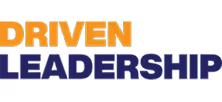Corporate Leadership Development in Los Angeles, CA


Leadership Training Corporate Leadership Development in Los Angeles, CA
Effective corporate leadership development in Los Angeles, CA is about more than workshops and certificates. In a region defined by fast-moving industries — entertainment, tech startups, healthcare, and global trade — organizations need scalable, measurable leadership systems that produce repeatable results: stronger teams, clearer succession paths, and leaders who can navigate cultural complexity and rapid change. This service page explains how tailored leadership training and corporate leadership development in Los Angeles addresses those needs with competency-driven programs, cohort delivery, and rigorous measurement designed to move the business needle.
Why focused leadership development matters for Los Angeles organizations
Los Angeles workplaces face unique pressures: a competitive talent market, high cost of living that drives turnover risk, hybrid work patterns, and diverse, multilingual teams. Leaders here must be adaptable, culturally fluent, and able to align distributed teams under tight timelines. Investing in corporate leadership development in Los Angeles helps companies reduce turnover, accelerate internal promotions, and build resilient leadership pipelines that reflect local market realities.
Common leadership challenges we solve
- Inconsistent leadership skill levels across departments: different hiring standards and rapid growth create gaps in decision making and execution.
- Lack of succession planning: key roles leave critical knowledge and performance gaps when exits are unplanned.
- Low cross-functional alignment: teams operate in silos, slowing product launches and client delivery.
- Poor leadership measurement: subjective performance reviews and no clear KPIs for leadership impact.
- Cultural mismatch: headquarters’ leadership models don’t fit LA’s diverse workforce or industry norms.
Types of corporate leadership development programs
We design programs that scale from frontline supervisors to executive teams, delivered in formats suited to Los Angeles operations.
- Scalable cohort programs: Small cohorts (8–15) combine peer learning with facilitator-led experiences to scale capability consistently across multiple sites.
- Custom competency models: Role-specific competency frameworks that map required behaviors from individual contributor to executive.
- Succession planning suites: Talent pools, readiness matrices, and individualized development plans to ensure continuity.
- Blended delivery options: On-site intensive workshops, virtual cohorts, and condensed weekend residencies to accommodate LA commutes and remote teams.
- Experiential leadership labs: Simulations, business challenges, and field assignments that embed change through practice rather than theory.
- Measurement and reporting services: Pre/post assessments, 360 feedback, business metric tracking, and dashboard reporting to quantify impact.
How we diagnose leadership needs (our process)
- Intake and context mapping
- Review organizational strategy, talent metrics, and recent performance gaps, with attention to LA market drivers like turnover rates and hybrid work patterns.
- Stakeholder interviews and surveys
- Confidential interviews with executives and HR, plus participant surveys to surface capability gaps and cultural priorities.
- Competency and role analysis
- Define or refine leadership competencies aligned to business goals (e.g., strategic agility, coaching, cross-functional execution).
- Readiness and succession assessment
- Map potential successors, development readiness, and critical role risk.
- Program design recommendation
- Deliver a scalable program blueprint: cohorts, timelines, learning modalities, measurement plan, and cultural customizations.
What a typical corporate leadership development program includes
- Leadership competency model: A clear framework articulating behaviors and proficiency levels for each role. Core domains often include strategic thinking, execution and accountability, emotional intelligence, coaching and development, and stakeholder influence.
- Cohort-based learning: Mixed-format learning (microlearning + 2-3 immersive sessions) that balances convenience for LA schedules with deep experiential work.
- Succession planning integration: Development pathways for high-potential talent tied directly to role readiness metrics and stretch assignments.
- Customization for company culture: Language, scenarios, and case studies tailored to your industry (media, health systems, tech) and local workforce demographics.
- Measurement and reporting: Baseline and follow-up 360s, leadership effectiveness surveys, promotion and retention analytics, and a business-impact dashboard linking learning outcomes to KPIs like time-to-fill leadership roles, employee engagement, and project delivery rates.
- Ongoing reinforcement: Coaching, action-learning projects, and manager toolkits to convert learning into behavior change.
Measurement: proving leadership development moves the needle
Effective corporate leadership development includes quantitative and qualitative metrics:
- Learning outcomes: pre/post competency scores and 360-degree feedback improvements.
- Behavioral change: observed manager behaviors via assessments and direct reports’ feedback.
- Talent mobility: internal promotion rates, time-to-readiness for critical roles.
- Retention and engagement: changes in voluntary turnover, engagement survey improvements in leadership effectiveness items.
- Business outcomes: changes in productivity, customer satisfaction, project on-time delivery — linked to cohorts via control groups or phased rollouts.
Reporting is provided in executive dashboards and quarterly impact summaries to ensure transparency and enable strategic decision making.
Customization for Los Angeles culture and constraints
- Scheduling that respects LA commute patterns: condensed on-site residencies and after-hours virtual sessions.
- Industry-relevant scenarios: media negotiation simulations, healthcare compliance leadership, or startup scaling case challenges.
- Multicultural and multilingual considerations: inclusive facilitation techniques, bilingual materials, and DEI-aligned competency modules.
- Remote/hybrid leader skills: leading distributed teams, virtual coaching, and maintaining cohesion across satellite offices.
Typical outcomes and lasting benefits
When implemented with rigor, corporate leadership development in Los Angeles delivers:
- Stronger internal pipelines and reduced reliance on external hires for critical roles.
- Faster leader readiness and better succession coverage.
- Measurable improvements in leadership behaviors and team performance.
- Higher retention of high-potential employees and improved engagement.
- A leadership culture aligned to local business realities and long-term strategy.
Example case snapshots (anonymized)
- A Los Angeles media firm implemented cohort-based competency training and a succession matrix; within 12 months internal promotions doubled and open management roles decreased significantly.
- A regional healthcare system rolled out blended leadership labs and manager coaching; leadership 360 scores rose meaningfully and nurse-manager turnover declined over the following year.
Corporate leadership development in Los Angeles, CA is a strategic investment that protects institutional knowledge, accelerates performance, and strengthens culture. By combining scalable cohort delivery, rigorous measurement, customized competency models, and succession planning, organizations can create leaders who are ready for LA’s unique challenges and prepared to deliver measurable business impact.

